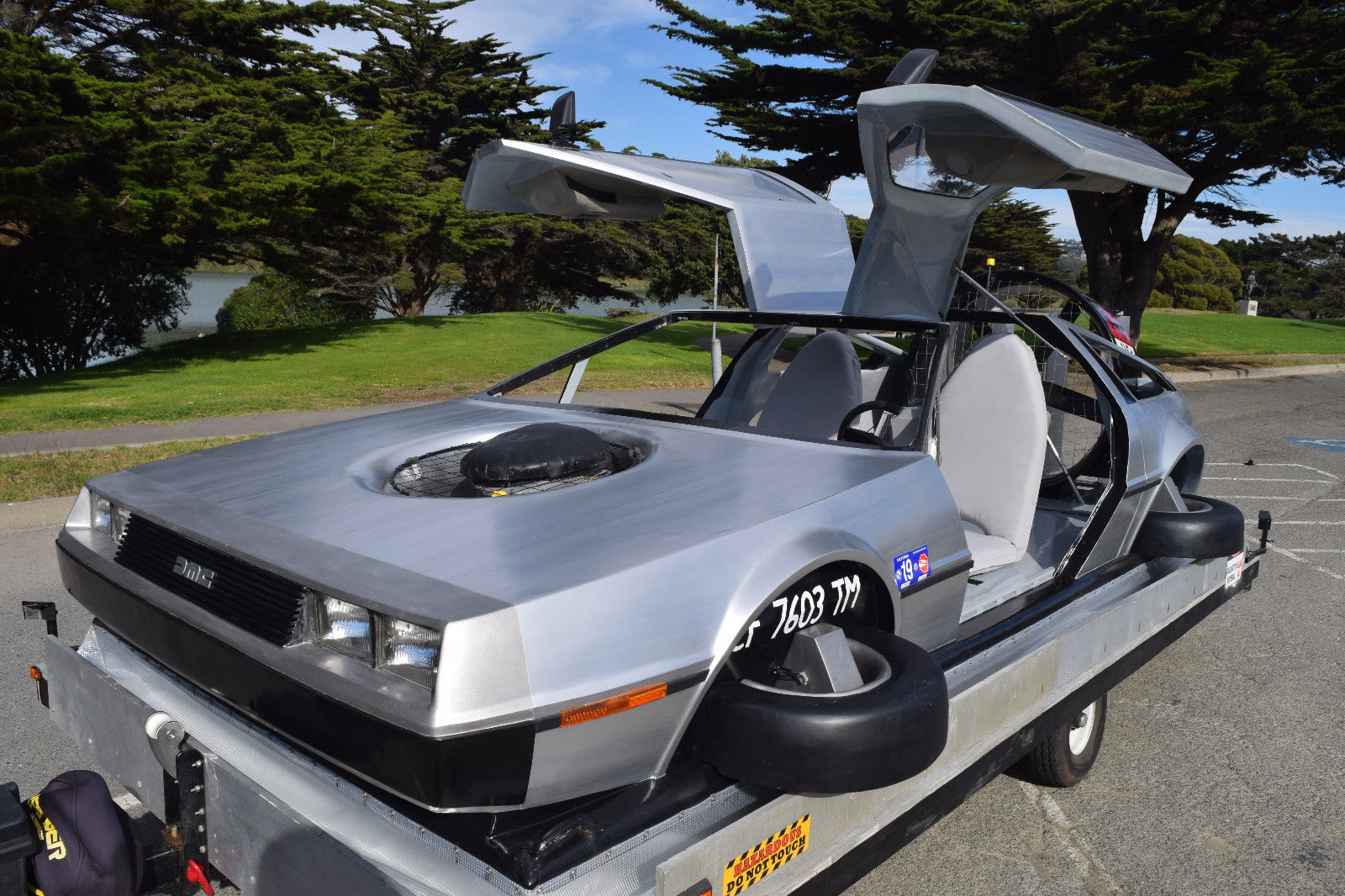Media | Articles
Buy this absurd DeLorean hovercraft, because boats are for squares
Turns out Dr. Emmett Brown wasn’t such a kooky dreamer after all. The flying DeLorean in Back to the Future is not only real, but Matt Riese has been tooling around in one since 2012.
What Riese had to endure to make it happen may shock you (it certainly did him), but his pain could be your gain. He’s offering the ridiculous, amazing hovercraft on eBay for $45,000.
“I definitely have mixed feelings about letting it go,” he says. “It makes life so fun and interesting and opens up all kinds of opportunities. But I’ve been obsessively working on it for over 10 years now, and I decided that I’m just ready for my life to be about other things.”
In a YouTube video that’s also featured on Riese’s website, DeLoreanHovercraft.com, the 35-year-old warns: “Be aware that when you take this out in public, you’re going to get a lot of attention and make a lot of friends.” He adds, in reference to the power behind the Back to the Future DeLorean, “This party is BYO Plutonium.”
Marketplace
Buy and sell classics with confidence




The hovercraft—which looks like a DeLorean but is actually sculpted Styrofoam with a fiberglass shell and metallic paint—has been turning heads in San Francisco for years. Riese is a frequent visitor to McCovey Cove, a popular boating and floating spot in San Francisco Bay that’s located just beyond the right field wall of the Giants’ home ballpark. He unveiled the hovercraft there in August 2012 and gained instant notoriety when his ride was featured on the Giants’ video scoreboard and also discussed on the team’s television broadcast.
Life at 88 mph
Riese says he has been fascinated with electronics and flying machines since he was a kid and always dreamed of building a hovercraft. In sixth grade he decided to make it a reality and ordered blueprints for a small vacuum-cleaner powered hovercraft through an ad in Boys’ Life magazine. But Riese was soon distracted by a more ambitious plan to build a flying go-kart. His parents quickly nixed that idea, and the hovercraft project sat on the shelf for years.
Riese earned a degree in philosophy from the University of California at Santa Cruz, worked in construction, traveled the world, and eventually went to grad school. But he never let go of his hovercraft dreams. Based on a kit from Universal Hovercraft, Riese modified the design and learned as he went. He just wasn’t sure how the body would look. At first, anyway.
“I don’t remember when I decided to make it look like a DeLorean,” Riese says. “But once the idea was there and I saw that it was possible, there was no stopping me. Doc Brown’s design philosophy must have really sunk in after I’d watched Back to the Future 10,000 times: ‘The way I see it, if you’re gonna build a time machine… why not do it with some style?’”



Riese admits he rushed to complete the hovercraft and wasn’t happy with the first iteration. So he began to rethink and refine his work. In July 2010, Riese raised $5644 through Kickstarter. He also took on a number of part-time jobs to help fund the project—including agreeing to be burned, poked, and electrocuted at the Stanford University Human Experimental Pain Laboratory. “It wasn’t all that bad,” he says, “but it makes for a good story!”
Riese worked on the hovercraft as often as he was able, but four years passed before he unveiled it to the world. “The journey was worth it because now I can look at the whole thing—its performance and the level of detail in the craftsmanship—and really be proud of it,” he says.
How it works
A 24-inch fan, powered by a 6-hp lawnmower engine, provides lift; a 36-inch thrust fan, powered by a 23-hp Briggs and Stratton twin-cylinder utility engine, provides thrust.
“The fan in the front pushes air down, and some of that air is diverted into a flexible vinyl skirt, which is like an inner tube around the perimeter of the hull,” Riese explains. “It traps the air, which goes down under the hull, and this pocket of high-pressure air lifts the craft 6-8 inches off the ground/water. Some air is escaping under the skirt at all times, so in theory, even the skirt isn’t touching the ground/water (although in reality it does in some conditions). A second fan pushes air behind the craft, driving it forward, and rudders behind this thrust fan turn it.”
Asked how fast the hovercraft can travel, Riese says, “88 mph in theory, 31 mph in practice.”

Fan favorite
At the hovercraft’s 2012 unveiling in McCovey Cove, Riese dressed as his alter ego, David Lorean, and held up a sign that read, “I’m back from the future! Spoiler alert: the Giants win it all!!” That prediction came true a couple of months later when the Giants swept the Detroit Tigers to capture the World Series championship. Riese says that goes to show that “jinxing is not real and time travel is.”
Riese has been featured in numerous media outlets, and he has leveraged his celebrity into a successful career as a Lyft and Uber driver—perhaps also proving that success and happiness aren’t contingent upon what you study or how many college degrees you get.
Riese has pledged 10 percent of the hovercraft proceeds to The Michael J. Fox Foundation, which is dedicated to finding a cure for Parkinson’s disease. Fox starred as Marty McFly in the Back to the Future trilogy.
“This hovercraft has given me so much and made my life so rich—and that’s because those geniuses made some really brilliant movies a few decades ago,” Riese says, explaining his connection to Fox and his foundation. “The joy that this thing brings to people doesn’t just come from what I did, it comes from what they did in Back to the Future. I’m grateful to give back and share the fruits of this project. Maybe Michael J. Fox will come and take a ride in the thing before it sells.”
Riese says he’s “excited for someone else to experience all of this,” but he also admits that the day may come when he decides to go back to the future and build another hovercraft. But it won’t look like a DeLorean. “If I build another one, it will definitely be a Batmobile—the 1989 version, of course.”
Something tells us Riese will make it happen.







